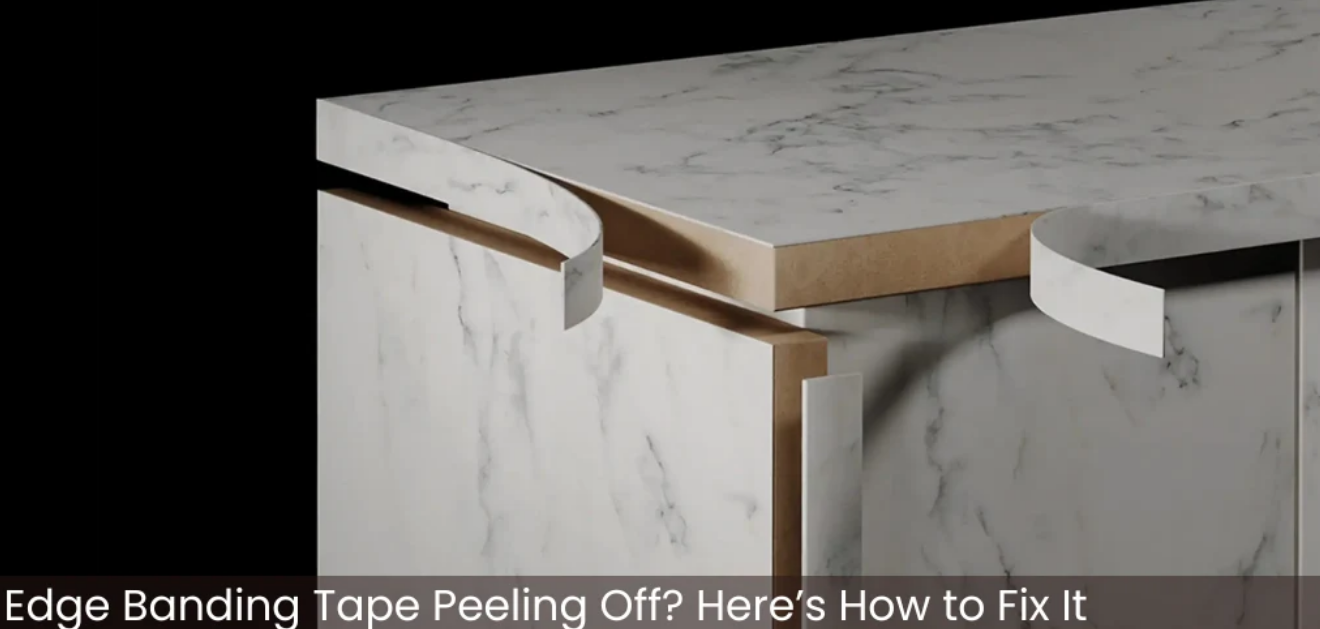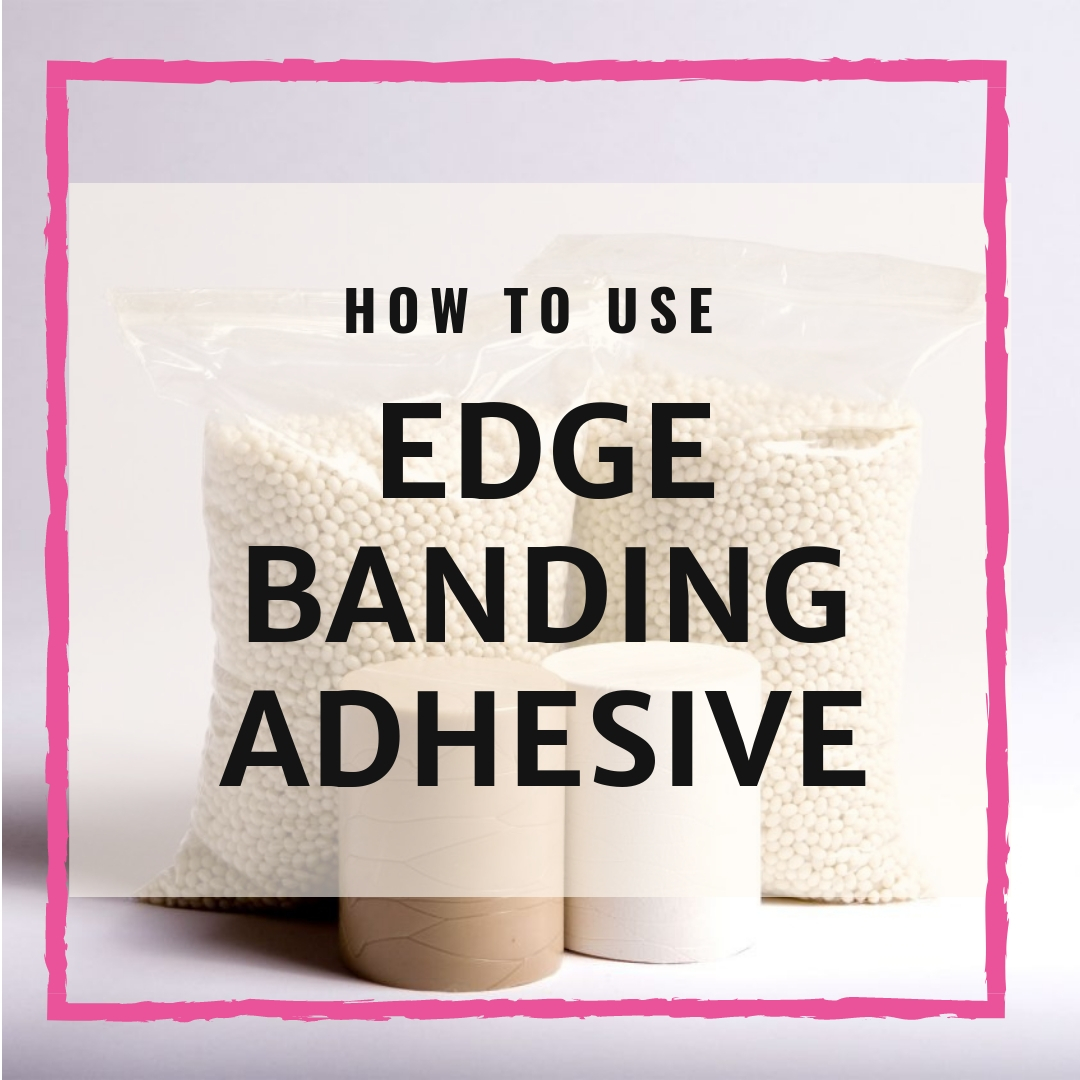How to Solve Edge Peeling: Expert Tips for Using Edge Banding Glue in Woodworking Repairs
Introduction
Edge peeling is one of the most frustrating problems in woodworking, affecting both manufacturers enthusiasts. Whether you're dealing with kitchen cabinets, office furniture, or custom woodworking projects, understanding how to properly use edge banding glue can make the difference between a professional repair and a recurring headache.

The Science Behind Edge Peeling
Common Causes of Failure
Understanding why edge banding fails is the first step toward effective repairs. The most common issues include:
Temperature Fluctuations
Wood and edge banding materials expand and contract at different rates when exposed to temperature changes. This creates stress on the bond line, eventually causing the edge banding glue to fail.
Moisture Exposure
Water is the enemy of many adhesives. When moisture penetrates the bond line, it can weaken the edge banding glue from within, leading to gradual failure.
Improper Surface Preparation
Even the best eco-friendly edge banding glue will fail if the surfaces aren't properly prepared. Dust, grease, or uneven surfaces prevent proper adhesion.
Expert Solutions: Choosing the Right Edge Banding Glue
PVC Edge Banding Glue: The Versatile Performer
PVC edge banding glue is specifically formulated for bonding PVC edges to various substrates. Its flexibility makes it ideal for applications where some movement is expected.
Tonren's Expert Tip: "Our PVC edge banding glue features enhanced temperature resistance up to 85°C, making it perfect for kitchen environments where heat and moisture are common challenges."
EVA Edge Banding Glue: The Cost-Effective Solution
EVA edge banding glue remains popular for its excellent initial tack and fast setting time. However, not all EVA adhesives are created equal.
Case Study: A furniture manufacturer reduced their edge peeling complaints by 70% after switching to Tonren's premium EVA edge banding glue with improved heat resistance.
PUR Edge Banding Glue: The Ultimate Performance
For the most demanding applications, PUR edge banding glue offers unparalleled bond strength and moisture resistance. The chemical curing process creates bonds that are virtually impervious to environmental challenges.
Technical Data: Tonren's PUR edge banding glue achieves bond strengths exceeding 5.0 N/mm, with excellent resistance to heat, moisture, and chemicals.

Step-by-Step Repair Guide
Assessment and Preparation
Step 1: Diagnose the Cause
Before applying any edge banding glue, identify why the original bond failed. Look for signs of moisture damage, heat exposure, or substrate issues.
Step 2: Surface Preparation
Proper preparation is crucial for successful repairs with eco-friendly edge banding glue:
Remove all old adhesive residue
Clean surfaces with isopropyl alcohol
Lightly sand both surfaces
Ensure surfaces are completely dry
Application Techniques
Step 3: Glue Selection
Choose the appropriate edge banding glue based on your specific application:
| Application Type | Recommended Glue | Key Benefit |
|---|---|---|
| Kitchen Cabinets | PVC edge banding glue | Heat and moisture resistance |
| Office Furniture | EVA edge banding glue | Fast setting time |
| High-Moisture Areas | PUR edge banding glue | Superior waterproof bond |
Step 4: Proper Application
The method of applying edge banding glue varies by type:
For EVA and PVC Edge Banding Glue:
Apply at recommended temperature (typically 180-200°C)
Maintain consistent application speed
Apply moderate pressure during bonding
For PUR Edge Banding Glue:
Follow precise mixing ratios (if two-component)
Account for longer open time
Ensure proper moisture levels for curing
Preventive Measures
Material Compatibility
Understanding material interactions is key to preventing edge peeling. Different substrates require specific types of edge banding glue for optimal performance.
Expert Insight: "We've developed specialized formulations of eco-friendly edge banding glue that address the unique challenges of different wood species and edge banding materials."
Environmental Considerations
Temperature and humidity control during application significantly impacts the performance of edge banding glue. Ideal conditions include:
Temperature: 18-25°C
Humidity: 40-60% relative humidity
Avoid direct sunlight during curing
Advanced Repair Techniques
Structural Reinforcement
For severe edge peeling cases, consider these advanced techniques using PUR edge banding glue:
Mechanical Fastening Combination
In cases where glue alone may not provide sufficient strength, combining edge banding glue with micro-fasteners creates a redundant bond system.
Substrate Reinforcement
When the underlying substrate is compromised, repairs with PVC edge banding glue should include substrate stabilization first.
Tonren's Innovative Solutions
Technical Innovations
Our 26 years of experience in adhesive development have led to breakthrough formulations in edge banding glue technology:
Enhanced Formulations
Tonren's EVA edge banding glue now features improved thermal stability, reducing edge peeling in temperature-fluctuating environments.
Eco-Friendly Advances
Our commitment to sustainability drives innovation in eco-friendly edge banding glue that doesn't compromise performance.
Frequently Asked Questions (FAQ)
Q1: How long does edge banding glue take to fully cure?
Cure times vary by glue type. EVA edge banding glue typically sets in 30-60 seconds, while PUR edge banding glue may require 24 hours for full strength. Our PVC edge banding glue offers a balance with handling strength in 2-4 hours.
Q2: Can I use the same edge banding glue for different materials?
While some general-purpose edge banding glue works for multiple materials, optimal results come from using specialized formulations. We recommend our PVC edge banding glue for synthetic materials and EVA edge banding glue for wood-based substrates.
Q3: What's the shelf life of your edge banding glue products?
Properly stored, our eco-friendly edge banding glue products typically have a 12-month shelf life. PUR edge banding glue has specific moisture-protection requirements to maintain effectiveness.
Conclusion
Solving edge peeling problems requires understanding both the causes and the appropriate solutions. By selecting the right edge banding glue for your specific application and following proper installation techniques, you can achieve durable, professional results.
Call to Action
Ready to solve your edge peeling challenges? Contact Tonren's technical experts for personalized recommendations on edge banding glue solutions. Visit our website or email us for technical datasheets and samples.
